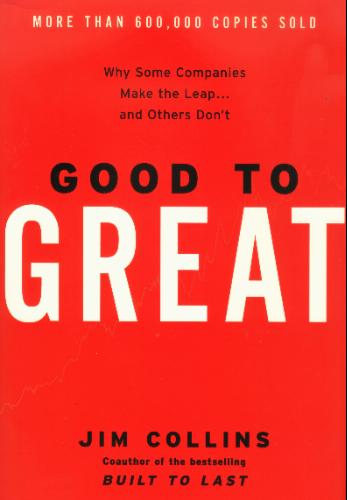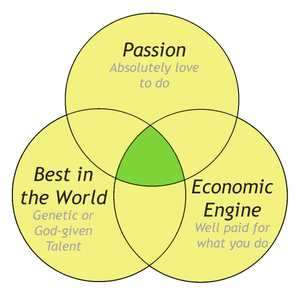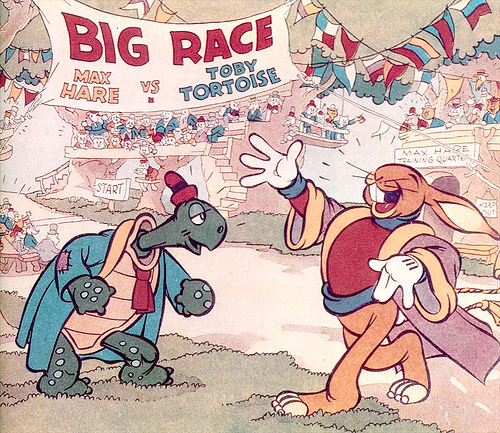
Good To Great by Jim Collins is a book that has been sitting on my bookshelf for awhile now. I finally got a chance to read it, and wanted to share an in-depth review of some of the lessons I learned in it.
The amount of research and analysis that has gone into this book is mind-boggling. A research team of over 25 people, headed by Jim Collins, spent 5 years (!) to distill what it takes to make the leap from an average company with average results to an outstanding company with outstanding results – consistently and over very long timeframes. Data was accumulated by looking at revenues, stock value, and by performing intensive interviews with employees and executives of companies.
The simplicity of the concepts belies their power and effectiveness. I found as much a set of things to do as much as I found a set of things NOT to do. The basis of making the transition to greatness comes down to three key areas:
- Disciplined People
- Disciplined Thought
- Disciplined Action
Now many people have a negative auto-pilot reaction to “discipline” – I know I did when I first encountered the word. But as Jim Collins in Good To Great broke the areas down I began to associate a whole new meaning to the word “discipline”.
Disciplined People pertains to both leadership as well as employees on the lowest levels. If you assumed the leader of a great company was a highly extroverted and charismatic CEO with a gargantuan ego, you'll be in for a surprise: All – yes, ALL – the companies that made the leap had a leader that displayed a compelling modesty combined with a fanatic drive to do whatever it takes to make the company great. Another surprise was that these leaders weren't all too concerned with a grand vision and strategy that needs to be executed right away. Instead they focused on WHO.
“First get the right people on the bus (and the wrong people off the bus) before you figure out where to drive it.”
Of the many traits the right people have, self-discipline and flexibility stand out. With the right people on-board, “you'll know where to take the bus.” And as you grow your company, the biggest challenge is continuously being able to find and keep the right people. Circuit City did that when they got started – down to the delivery man a high standard was set. People that couldn't play at that standard were removed. A big lesson to take away from this section is that baby-sitting people and old-fashioned ruthless discipline are no way to achieve greatness in a company.
Disciplined Thought is achieved in two steps. The first step is confronting the brutal facts, yet never losing faith. This is very different from optimistically hoping something will happen, while completely ignoring the reality of things going on around you. Instead you face the reality of where you are today and move forward with an “unwavering belief that YOU WILL PREVAIL” – not just survive, but prevail as a great entity.

Disciplined Action is a natural result of the previous two areas: With disciplined thought and disciplined thought, a culture of discipline develops where people have simultaneous freedom and responsibility. They don't need to be micro-managed. Why? (i) they are willing to do whatever it takes, (ii) they have a high degree of self-discipline, (iii) they have unwavering belief in what they do, (iv) they know exactly what they and the company are about and where they're taking it. And they don't need forced motivation because they're aligned with the company's outcomes.

The executives of the Good To Great companies found it impossible or silly to pinpoint a single defining event that made the difference. They didn't parade grand goals to the press, nor did they have a launch party to start the transition. Instead, they just did their thing with passion and absolute commitment, allowing the transition to happen very organically.
Why try for greatness? Isn't success enough?
According to Jim Collins if you're asking that question you're in the wrong line of work. People that help make companies great, don't go for greatness because of what they get, but BECAUSE IT CAN BE DONE. They associate a meaning and passion to it so powerful that they don't see any other option but to strive for greatness. That is the main premise of the Good To Great book.
Overall, I'd say that Good To Great by Jim Collins was thoroughly enjoyable. Great insights were combined with facts as well as anecdotes of the companies that made the leap, and those that didn't. And the lessons learned here, while geared for the business arena – are readily applicable to making the leap to greatness in your own life. You can purchase the book from Amazon by clicking this link.


 (5 votes, average: 4.00 out of 5)
(5 votes, average: 4.00 out of 5)